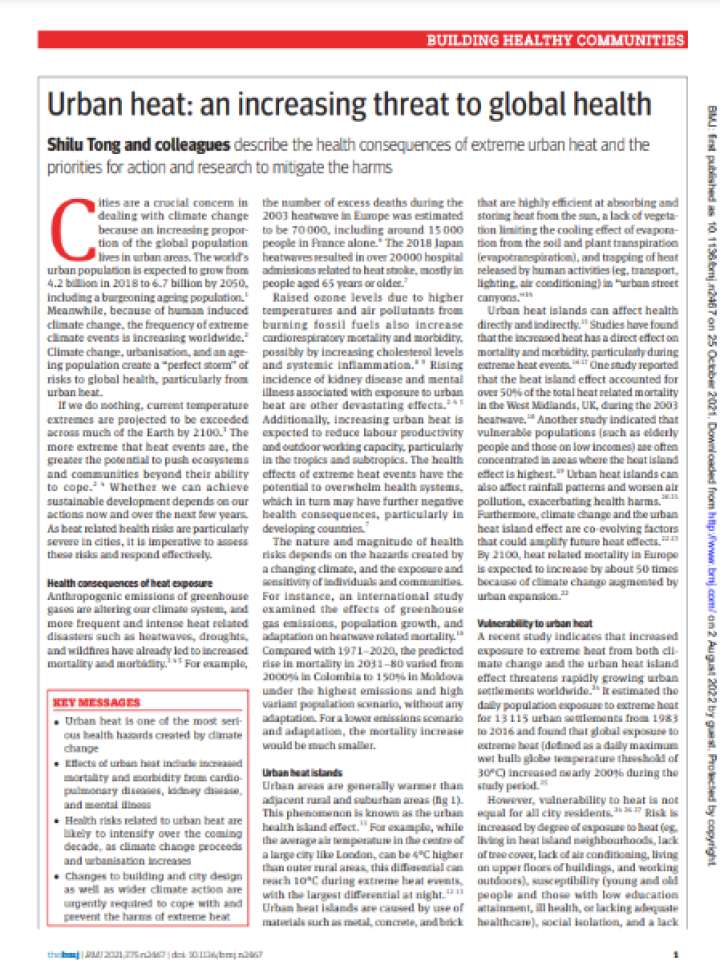Urban heat: an increasing threat to global health
This report examines the health consequences of extreme urban heat and the priorities for action and research to mitigate the harms. Cities are a crucial concern in dealing with climate change because an increasing proportion of the global population lives in urban areas. The world’s urban population is expected to grow from 4.2 billion in 2018 to 6.7 billion by 2050, including a burgeoning ageing population. Meanwhile, because of human induced climate change, the frequency of extreme climate events is increasing worldwide. Climate change, urbanisation, and an ageing population create a “perfect storm” of risks to global health, particularly from urban heat.
This report highlights that the health risks of heat can be mitigated by reducing the accumulation of heat and applying cooling techniques. Possible strategies include altering individual behaviours, improving building design and city planning, and developing heat health warning systems. Urban design measures such as increasing reflectivity, for example by painting surfaces white, can mitigate the heat island effect, lowering temperatures by 1–3.5°C. Urban greening, including urban forests, parks, and green walls, can also achieve localised cooling through enhancing evapotranspiration rates and shading. As urban design will not eliminate the dangers from extreme heat events alone, heat health warning systems remain key tools for managing urban heat risk.
Explore further
